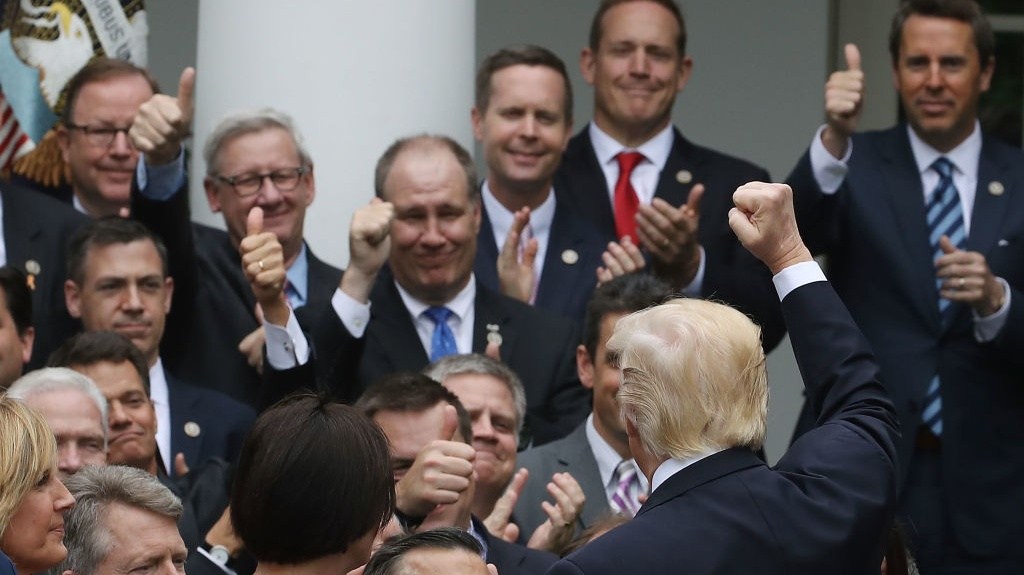By Amy DePaul
With a condom in his back pocket, Cristobal De La Cruz steps into a classroom in the Orange County Juvenile Hall in Southern California, where a group of young men between the ages of 12 and 18 are waiting. At 28, he is still young enough to blend in; he’s comfortable chatting about the latest video games or slipping into Spanish slang at the right moments.
De La Cruz, a health educator with Planned Parenthood of Orange and San Bernardino Counties, is here to lead a workshop for between 10 and 20 incarcerated youths, a majority of whom are of color. De La Cruz will guide them in lessons about anatomy and pregnancy, birth control and sexually transmitted infections. He also explores healthy relationships and the pitfalls of toxic masculinity.
But the fun really begins when De La Cruz pulls the condom out of his pocket. As to be expected, all eyes are on him.
“They’re like, ‘Wow, are you going to open it?’” he says. The answer is yes … after he asks a few questions.
“I start off with asking them what the first step is,” De La Cruz says.
To which they might answer: Get the girl or Buy the condom.
Wrong. The first step, he tells them, is consent.
“Consent is ongoing,” he says. “If at any point a person doesn’t want to have sex, consent is not given and they will stop. That’s step number one.”
It’s common in the ensuing discussion for one of the workshop participants to protest that he is too well-endowed for a condom. De La Cruz is ready for this, stretching the condom a couple feet lengthwise or even inserting his hand up to his wrist to assure the youth that, yes, he most likely can wear a condom.
De La Cruz also encourages them not to rip condoms open with their teeth because they might break them, always check the expiration date, avoid putting it on backward (aim for a sombrero, not a beanie), and of course, make sure that once in place, the condom has some air pockets, like a bag of chips.
These conversations, coupled with the condom demonstration, break barriers and help De La Cruz earn trust. As he sees it, participants are thinking, “This isn’t just an old man trying to teach me about math or life choices and how to be responsible. But I am teaching them about life and how to be responsible—but in their sexual and reproductive health—and in a fun way.”
Respecting participants and inviting them to share their thoughts is key, says De La Cruz: “That’s what makes them eager to have us back.”
From Birth Control to the “Man Box”
Planned Parenthood’s Orange and San Bernardino chapter, which is the second largest Planned Parenthood affiliate in the nation, began these workshops in 2013. They’re now taught at not only Juvenile Hall but at Theo Lacey Facility, a nearby maximum security jail complex.
Workshops cover healthy relationships, gender and sexuality, and sex trafficking. One session is reserved for what Planned Parenthood calls the Male Involvement Program, which explores “the man box,” or limitations on behaviors not considered masculine. Other topics include youth rights and resources, such as a program that provides birth control and STI testing to low-income Californians.
The lessons align with the sex-ed curriculum used in California’s middle and high schools. But many incarcerated young men missed those classroom lessons due to truancy or incarceration. Their lack of knowledge about sexual health puts them at a lifelong disadvantage. It’s just one more factor contributing to the poorer health outcomes associated with disadvantaged communities.
The chapter expects to reach about 300 incarcerated male teens and young men by the end of June, with plans to expand to facilities in San Bernardino County.
How did Planned Parenthood, which is normally associated with women’s health, find its way into the lives of incarcerated young males?
The idea is that by improving the sexual and reproductive health of young men, the workshops also benefit their female partners, explains Faviola Mercado, community education manager at the Orange and San Bernardino chapter of Planned Parenthood.
“We’re increasing the likelihood of men being more open to seeking resources and testing for STIs,” Faviola says. “It helps their own sexual reproductive health, and we also know that toxic masculinity traits can be harmful to themselves and to women and children.”
By anecdotal measures, the workshops can lead to changes in thinking, such as when participants conclude that an activity they earlier said was strictly feminine—say, cooking—is fine for men to partake in. The workshop’s interactive format accounts for these mini-breakthroughs.
“Our presentation is less of a teacher telling students what to do [and] more of a conversation, with respect between each other,” health educator Neil Reyes explains. “We’re breaking down ideas of masculinity, learning about reproductive health, and helping partners.”
The Challenge of Changing Mindsets
But the effort certainly comes with obstacles. De La Cruz and Reyes are quick to note that a jail, which operates on traditional notions of masculine power, is not the ideal setting to foster emotional expression.
“The participants are not in a place where empathy is rewarded,” Reyes says. “So it’s not clear how much the message of men being OK to cry or to show emotions is being put to use where they are.”
Some lessons are also met with resistance. For example, participants often push back on less restrictive definitions of gender and sexuality, though De La Cruz and Reyes hope that by answering questions on these subjects, providing explanations, hearing viewpoints, and calling for respect for all, they can build more tolerance.
“At the end of the day, I say, ‘I’m not trying to say what is right or wrong,’” De La Cruz says. “But let’s talk about it. Let’s be respectful and have this conversation.”
It’s difficult to gauge the success of prison programs in changing behavior in the long term. Sometimes the only metric is the rate of re-offending—a “crude measure,” says Lois Davis, a senior policy researcher at RAND Corporation with expertise in correctional education.
But the Planned Parenthood workshops at Theo Lacey, the adult facility, will be subject to far more nuanced evaluation since the Lacey participants are enrolled in a special initiative called the Transitional-Age Youth, or TAY sector, for short. TAY sector houses men between the ages of 18 and 25 together and provides classes in areas such as securing employment, navigating addiction and mental health, and preparing for re-entry.
TAY administrators will continue to interview participants up to three years after release—to ascertain, in part, whether participants adhere to sexual health practices—and compare findings to a control group. And while it’s too early for results, the program’s co-developer and clinical director, Marie Gillespie, is optimistic about the educators’ rapport with the young men.
De La Cruz and Reyes “are incredibly approachable,” she says. “They’re able to connect with these young men perhaps at a level other people haven’t attempted to connect with them on. It’s not a peer relation but someone you can see in your shoes saying, ‘These are essential skills.’ That’s going to resonate more with young adult populations.”
For now, Planned Parenthood’s health educators are continually refining the workshops based on feedback from participants.
One such moment happened during a workshop that Reyes was conducting. A participant said that while he was raised not to talk about his emotions, he would support his son’s choice to be more expressive.
“I absolutely remember that moment and thought it was pretty cool,” Reyes says. “Now I know that this person got something from the workshops that he could show the next generation if he has his own son.”
This article originally appeared in Yes! Magazine at https://www.yesmagazine.org/health-happiness/2024/06/10/california-men-jail-education-sex.
Yes! Magazine is a nonprofit, independent media organization dedicated to telling stories of … . Learn more at Yes! Magazine
Image Credit: freepik



































